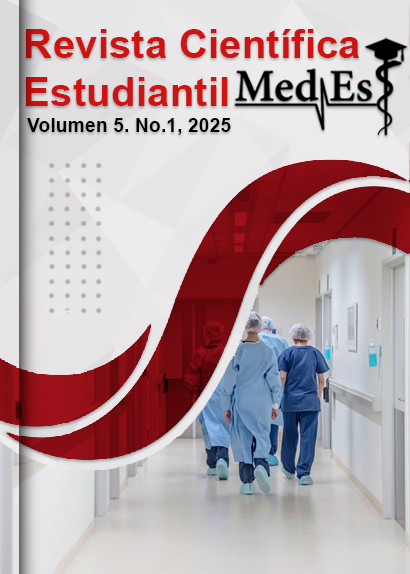Impact of the CIENTUMat Student Scientific Group of the University of Medical Sciences of Matanzas
Keywords:
Science communication, Student scientific groups, Medical education, Health research, Knowledge disseminationAbstract
In today’s fast-paced scientific landscape, effective science communication is as crucial as technical expertise for future medical professionals. The CIENTUMat Student Scientific Group at Matanzas University of Medical Sciences was founded on May 10, 2024, to bridge this gap, fostering scientific culture among healthcare students. With 800 members, including students, professors, and researchers nationwide, CIENTUMat promotes research, collaboration, and science dissemination through workshops, conferences, and international events.
The group enhances critical thinking, communication skills, and access to scientific resources, resulting in increased student participation in research projects and publications. It also builds academic networks, connecting students—especially those from remote institutions—to vital scientific opportunities. By integrating research with community health initiatives, CIENTUMat empowers future professionals to apply knowledge practically, addressing local health challenges while nurturing empathy and social responsibility.
CIENTUMat exemplifies how student-led scientific groups strengthen medical education, innovation, and public health engagement, making it a model for Cuba’s academic community.
Downloads
References
1. Pancorbo J, Sánchez Y, Fernández Y, Vega M. Los grupos científicos estudiantiles como estrategia para el desarrollo de proyectos de investigación. Revista Científica Mundo Recursivo [Internet]. 2024 [citado 04/11/2024]; 7(1):163-178. Disponible en: https://atlantic.edu.ec/ojs/index.php/mundor/article/view/228
2. Vitón-Castillo AA, Riverón-Carralero WJ, Rivero-Morey RJ, Hernández-García F, Lazo-Herrera LA. Factores asociados a la publicación por miembros de grupos científicos estudiantiles en universidades médicas cubanas. Rev Cub Med Mil [Internet]. 2022 [citado 04/11/2024]; 51(2). Disponible en: http://scielo.sld.cu/scielo.php?script=sci_arttext&pid=S0138-65572022000200012&lng=es&tlng=pt
Downloads
Published
How to Cite
Issue
Section
License
Copyright (c) 2025 Richard Marcial Gálvez-Vila, José Alfredo Gallego-Sánchez

This work is licensed under a Creative Commons Attribution-NonCommercial 4.0 International License.
Those authors who have publications with this journal accept the following terms: The authors will retain their copyright and guarantee the journal the right of first publication of their work, which will be simultaneously subject to the Recognition License. Creative Commons that allows third parties to share the work as long as its author and its first publication in this magazine are indicated. Authors may adopt other non-exclusive license agreements for the distribution of the published version of the work (e.g.: deposit it in an institutional telematic archive or publish it in a monographic volume) as long as the initial publication in this journal is indicated. Authors are allowed and recommended to disseminate their work through the Internet (e.g.: in institutional telematic archives or on your website) before and during the submission process, which can produce interesting exchanges and increase citations of the published work.





